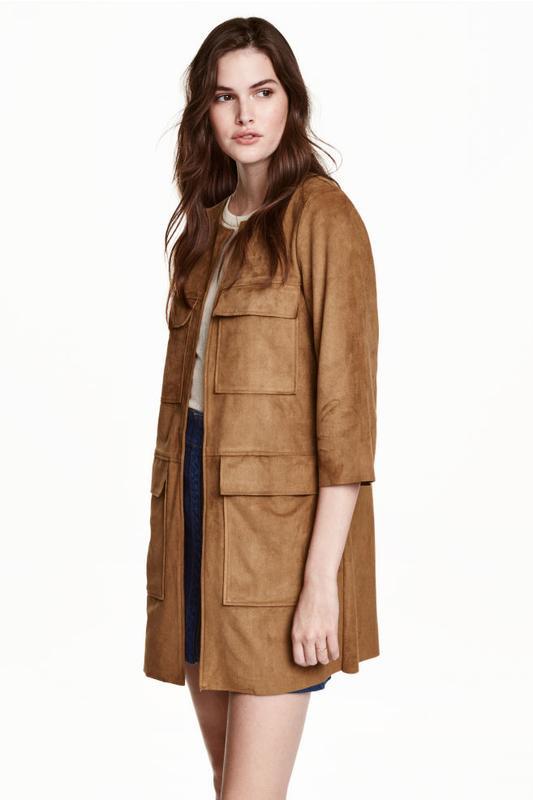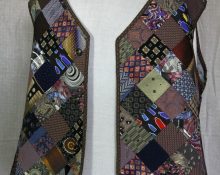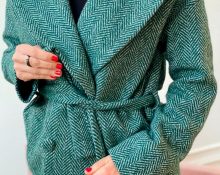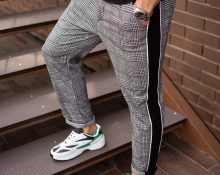
creativecommons.org
A suede raincoat is one of the trends for 2021. The velvet texture, on the one hand, adds nobility and “expensiveness” to the image, and on the other, obliges the owner of the cloak to follow the rules and handle the item very carefully. In this material we will look at what a suede raincoat goes best with, what weather it is designed for and what accessories can decorate it. At the end of the article you will find the best examples of combinations with a suede raincoat.
What is suede?
Natural suede looks like a velvety fabric with a small pile on both sides. Contrary to beliefs, suede retains heat well and, with proper processing, can even be used in the cut of a sheepskin coat. Suede is leather processed using the so-called fat tanning technique and is used for sewing outerwear, skirts, trousers and shoes.
History of suede
As usual, there are several versions of the origin of the word “suede”.According to the first, the name of suede comes from the French word “chamois”, which translates as “chamois, mountain goat”. According to the second version, “suede” owes its etymological origin to the Dutch word “zeem”, which, like the French version, is translated as “mountain goat”. The first mention of suede dates back to the 4th century AD. It was then that tanners in Europe experimented with coatings for leather so that it would retain its elasticity and softness longer. The craftsmen used all available ingredients containing fats: pork and lamb lard, egg yolks and rapeseed oil, but in the end, French tanners at the beginning of the 18th century decided to focus on fish oil and vegetable mixtures. However, later seal oil, bone fat and linseed oil were also sometimes used for this process.
The largest place for suede production was the small city of Biarritz in southwestern France. Local fishermen sold cod not only to local residents for cooking, but also to tanners for leather processing. It is believed that the secret of leather processing came to Russia from this place, passing through the borders of Germany and Poland. Novgorod and Astrakhan became Russian centers for leather processing, where seal oil was mainly used. But domestic suede was not popular; it was mainly bought in Poland.
As a result of multi-stage experiments of many generations of tanners in all countries, by the end of the 18th century, a unified technology for the production of suede leather was developed. This process consisted of many stages and included chemical treatment of the material. To begin with, untreated skin (but without wool) was lubricated with one of the types of fats.Then it was placed in a special machine, where the material was soaked in fats under pressure for several hours (an average of 3 to 5). Penetrating into the skin, fats form strong bonds with the proteins of the material and remain inside for a long time. Then the skins were taken out and heated. After multiple stages of suede tanning (alternating impregnation in the machine and heating), a semi-finished product was obtained that was technically ready for use. Suede was rarely left completely untreated: more often it was sent to another stage - painting.

creativecommons.org
Natural and artificial suede
The trend towards environmental friendliness will not cancel the fact that most customers will prefer to wear raincoats made of natural suede rather than an artificial substitute. And here the main argument is the high wear resistance of suede and similar natural materials. This is the very case when the game is really worth the candle.
Natural suede can be: unrefined and refined. And these are not simple poetic names. The two types of materials differ in the raw materials used, as well as the degree of mechanical stress. The fact is that unrefined suede is usually made from the skins of calves or sheep, and refined suede is usually made from the skins of chamois, deer and goats. Outerwear, particularly suede raincoats, are most often made from unrefined suede.
Velor can be a substitute for suede. But unlike suede, velor has a one-sided pile, which is much shorter than that of suede. Velor is made from defective skins of sheep, goats and pigs and processed using the so-called chrome tanning. Unlike suede, velor is much thinner and not as wear-resistant, but these disadvantages are included in the price of the product.There is also a subtype of velor, a denser material - split velor, which is obtained by layering and processing several skins at once. Another substitute for suede can be nubuck, which is also obtained by chrome tanning, multi-layer processing and treatment with abrasive components. Unlike suede, nubuck has virtually no lint, but due to longer processing it is highly wear-resistant and water-resistant. Due to these properties, nubuck is often used in the manufacture of shoes.
As an environmentally friendly alternative, you can use artificial suede, which is either made from microfiber fibers (woven version) or created by sanding a special polymer coating. Outerwear is also made from these materials, decorating the material with additional spraying and perforation. But be prepared that it will still be inferior in quality to natural suede.
What to wear with suede raincoats
Suede is both one of the most luxurious and one of the most difficult to care for materials. Natural suede seems to emphasize the status of the owner, who is unlikely to decide to go shopping for groceries in a suede coat or take a walk in the autumn forest. And it’s not just the capriciousness of the material: suede looks expensive and is more suitable for business meetings and events.
Due to its presentable appearance, a suede raincoat can be worn with almost any everyday look. A combination of a natural suede raincoat with flared trousers and black leather ankle boots will be universal. If the meeting is informal, you can replace classic trousers with skinny jeans.Another option for a business look could be a gray checkered double-breasted jacket and a suede raincoat casually thrown on top. And, of course, almost any dress made from thick fabrics will look good with an unbuttoned suede raincoat: this combination creates a relaxed look and is suitable for both a first date and a business dinner.
What accessories can you combine suede raincoats with?
Like velvet, suede is self-sufficient and does not need additional decorations. In an everyday look, combining suede and jewelry, there is a risk of going overboard. If you wish, you can add accents with minimalist stud earrings and multi-level chains. It is worth giving up massive jewelry, jewelry with pearls, as well as bright decor in the boho style.
Rules for caring for a suede raincoat
Natural suede needs careful care. And since dry cleaners can often ruin such delicate items, cleaning stains and treating a suede raincoat falls on the owner’s shoulders. Fresh dirt can be removed by wiping the affected area with a cotton pad moistened with water, but it is better to treat greasy stains with soda. If your suede raincoat is covered in dust and worn out, a special suede brush can improve the situation. Semolina cleanses stubborn dry dirt well, but keep in mind that you will have to carry out a strange procedure: first sprinkle the affected areas with semolina and leave for several hours (small wheat grains will absorb excess fat and some of the dirt), and then rub the contaminated areas for a long time with soft side of the sponge and semolina. Despite its strangeness and energy consumption, this is one of the most gentle and effective ways to clean suede and not lose money (and possibly the item itself) in dry cleaning.
But, of course, the best way to extend the life of a suede raincoat is to treat the material with special protective sprays containing fluorocarbon or silicone impregnation. Timely care and careful wear can significantly extend the life of your item.


 0
0





